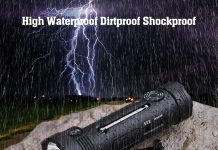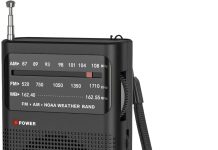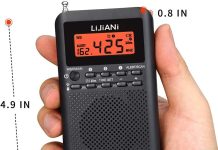Let’s set the stage: you’re in your cozy living room, sipping a warm cup of tea, and enjoying your favorite radio station. Suddenly, you hear a crackle through the speakers followed by an urgent announcement about an approaching tornado. Panic sets in as you scramble to gather your loved ones and take cover. In moments like these, having a weather alert radio can be a lifesaver. But what exactly sets it apart from your average radio? Today, we’re here to unravel the mystery and shed light on the key differences between a weather alert radio and its counterparts. So, buckle up and prepare to be enlightened!
Review contents
Understanding the Purpose of a Weather Alert Radio
Weather Alert Radios
Weather alert radios, also known as NOAA Weather Radio or Emergency Alert System, are specially designed radios that provide real-time weather updates and emergency alerts. These radios are equipped with features that allow users to stay informed about potential weather hazards and other emergency situations in their area.
Purpose of a Weather Alert Radio
The main purpose of a weather alert radio is to keep people informed and safe during severe weather conditions. These radios receive broadcasts from the National Weather Service (NWS) and other authorized sources, providing users with timely alerts and warnings about severe weather events such as tornadoes, hurricanes, and flash floods. Weather alert radios are essential tools for individuals, families, and communities to stay prepared and respond effectively to weather-related emergencies.
Features of Weather Alert Radios
Alert Programming
One of the key features of weather alert radios is the ability to program specific alerts. Users can customize their radios to receive alerts only for the types of severe weather events that are relevant to their location. This helps prevent unnecessary alarms and ensures that users receive alerts that are of immediate concern to them.
Specific Area Message Encoding (SAME)
Weather alert radios use the Specific Area Message Encoding (SAME) technology to pinpoint the exact geographic area for which an alert is relevant. By inputting specific county codes, users can receive alerts that are specific to their location, avoiding undue panic or confusion caused by alerts that do not apply to them.
Backlit Display
Many weather alert radios feature a backlit display, making it easier to read and understand alerts even in low-light conditions. This feature is particularly useful during nighttime or in situations where power outages may occur.
Battery Backup
To ensure continuous functionality, weather alert radios usually come with battery backup capabilities. In the event of a power outage, the radio will continue to receive alerts and provide crucial information to the user. It is always advisable to choose a radio with a long-lasting battery life or consider having additional batteries on hand for extended periods without power.
External Antenna Support
Some weather alert radios provide support for external antennas. This feature allows users to enhance the radio’s reception and range, particularly in areas with weak or unreliable signal strength. By connecting an external antenna, users can improve the radio’s performance and ensure they receive alerts even in challenging environments.
Other Types of Radios
Broadcast Radios
Broadcast radios, such as AM/FM radios, focus on entertainment and news. They provide a wide range of radio stations for listening to music, talk shows, and other forms of entertainment. While these radios may broadcast emergency information in certain situations, they do not provide the same level of detailed, real-time weather updates and alerts as weather alert radios.
Two-Way Radios
Two-way radios, also known as walkie-talkies, are primarily used for communication between individuals or groups over short distances. They are often used in recreational activities, events, or professional settings where immediate communication is essential. Unlike weather alert radios, two-way radios do not receive weather updates or emergency alerts from official sources.
Ham Radios
Ham radios, or amateur radios, are used by licensed operators to communicate over a wide range of frequencies. They are popular among hobbyists and emergency communications enthusiasts who provide communication support during disasters and other emergencies. While ham radios can receive weather information, they do not offer the same level of convenience and specialized features as weather alert radios.
CB Radios
Citizens Band (CB) radios are two-way radios that operate on specific channels designated for public use. They are commonly used by truckers, off-road enthusiasts, and some commercial businesses. CB radios primarily serve as a means of communication, and while they may provide limited weather updates, they lack the comprehensive features and dedicated focus on weather safety found in weather alert radios.
Emergency Radios
Emergency radios, also known as crank radios or survival radios, are designed to provide information and communication capabilities during emergencies. These radios may incorporate several functionalities, including weather alert capabilities, AM/FM reception, built-in flashlights, and the ability to be powered by alternative power sources such as hand-cranking or solar energy. However, their weather alert features are often not as robust as those found in dedicated weather alert radios.
Comparison: Weather Alert Radio vs. Other Radios
Functionality
Weather alert radios are purpose-built to provide real-time weather updates and emergency alerts. They are designed with features like alert programming and SAME technology, ensuring that users receive relevant alerts for their specific location. Other radios, such as broadcast radios, two-way radios, ham radios, CB radios, and emergency radios, may offer other communication or entertainment functions but lack the dedicated weather alert functionality of weather alert radios.
Information Source
Weather alert radios receive weather updates and emergency alerts directly from official sources like the National Weather Service. This ensures the accuracy and timeliness of the information. On the other hand, other radios rely on different sources of information, such as radio stations or user-to-user communication, which may not provide as detailed and specialized weather information.
Battery Life
Weather alert radios typically have long-lasting battery life and often include battery backup capabilities. This ensures that users can receive alerts and stay informed even during power outages or other unforeseen events. Other radios may not prioritize extended battery life or backup options since their primary functions may not require prolonged usage during emergencies.
Range and Coverage
Weather alert radios have a limited range and coverage since they are designed to receive broadcasts from specific authorized sources. This limited coverage ensures that users receive alerts that are specifically relevant to their geographic area. In contrast, other radios like two-way radios or CB radios may have a longer range but do not provide the same level of localized, targeted alerts.
Portability
Weather alert radios are generally compact and portable, making them easy to carry and move around. This portability allows users to have their radio nearby wherever they go, ensuring they can receive alerts and stay informed regardless of their location. Other radios, depending on their functionality and design, may be bulkier or less portable.
Price Range
Weather alert radios vary in price, but they are generally affordable and readily available. Their prices reflect the specialized features and functionality they offer. Other radios may have a broader price range, depending on their specific functionalities and brands. While some radios may be cheaper, they often lack the focused weather alert capabilities of weather alert radios.
Advantages of Weather Alert Radios
Real-Time Weather Updates
Weather alert radios provide users with real-time weather updates, allowing them to stay informed about changing weather conditions in their area. This information is crucial for making informed decisions and taking appropriate actions to protect oneself and loved ones during severe weather events.
Emergency Alerts
In addition to weather updates, weather alert radios also receive emergency alerts. These alerts can include warnings about other potential dangers, such as hazardous materials spills, AMBER alerts, or public safety warnings. Weather alert radios serve as a reliable source of critical information during emergency situations.
Specially Designed for Weather Hazards
Unlike other radios that may offer a wide range of features, weather alert radios are specifically designed to address weather hazards and related emergencies. They focus on providing users with the most relevant and timely information to help them prepare, respond, and stay safe during severe weather events.
Community Support Systems
Weather alert radios are often part of broader community support systems. They help disseminate important weather information to a larger population, ensuring that communities are well-informed and can take appropriate actions collectively. This community-oriented approach enhances overall preparedness and reinforces the importance of weather safety within neighborhoods and localities.
Government Support
Weather alert radios are backed by government agencies such as the National Weather Service, which ensures their accuracy and reliability. This support and oversight from official channels instill confidence in users, knowing that the information they receive is vetted and aligned with the latest weather forecasts and emergency alerts.
Disadvantages of Weather Alert Radios
Limited Scope of Use
Weather alert radios have a limited scope of use as they primarily focus on delivering weather updates and emergency alerts. While these features are crucial during severe weather events, they may not provide the same level of entertainment or diverse communication options as other radios.
Dependent on Localized Signals
Weather alert radios rely on localized signals from official sources, which means they are only effective within a specific geographic area. Users who frequently travel or live in areas with weak or unreliable signal strength may experience limitations in receiving alerts and updates.
Cost
While weather alert radios are generally affordable, there is still a cost associated with acquiring one. For individuals on a tight budget or those who may already own other radios that offer overlapping functionalities, the cost of purchasing a weather alert radio may be a factor to consider.
Limited Features
Weather alert radios prioritize weather updates and emergency alerts, often at the expense of other features found in different types of radios. Users looking for additional functionality, such as entertainment or advanced communication options, may find that weather alert radios do not fully meet their needs.
Conclusion
Weather alert radios are invaluable tools for staying informed and safe during severe weather conditions. With their specialized features and focus on weather updates and emergency alerts, they provide a reliable source of information for individuals, families, and communities. While other radios may offer different functionalities, the dedicated purpose and government support behind weather alert radios make them an essential addition to any preparedness plan. From real-time weather updates to community support systems, weather alert radios play a vital role in protecting lives and ensuring societal resilience during weather-related emergencies.



























